Last Monday’s beautiful ride through the countryside had the unfortunate consequence of knocking me down for most of the week due to the lack of a mask. If I lived in the Pacific Northwest I might be experiencing the same thing right now from all the wildfires. I have masks but because of all the rain we’d been getting the air hadn’t been bad, under 50 pm2.5 (parts per million smaller than 2.5 micrometers, that cause the most damage in the lungs), so I hadn’t been wearing one.
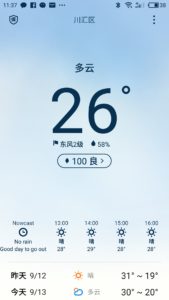
I’d felt hints of rawness at the back of my throat earlier, but it had gone away each time and I’d apparently tuned it out. By the time I checked my weather apps, the pm2.5 was 100. Normally I only get about 1 cold per year, but last year I was getting one every few weeks after I arrived in China. I figured I should be wearing a mask, so I started doing some research and asking around. In the meantime we used the easily available, but questionably useful surgical-style mask popular with most people here. I ordered 2 boxes of N95 respirators when I finally decided on a mask. They are certified to filter out 95% of particles down to .3 microns. The width of a human hair is 70 microns. I only got one cold the rest of the school year, including through the worst air periods. Of course you don’t need to be getting colds to know that this air is bad for you, just read some of the information from the EPA:
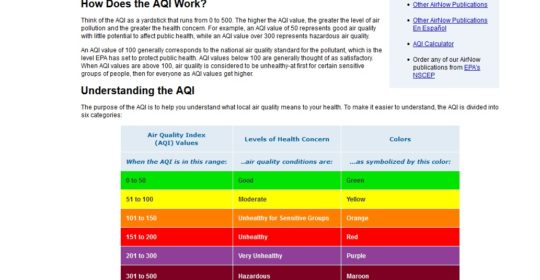
“The AQI (air quality index) is an index for reporting daily air quality. It tells you how clean or polluted your air is, and what associated health effects might be a concern for you. The AQI focuses on health effects you may experience within a few hours or days after breathing polluted air. EPA calculates the AQI for five major air pollutants regulated by the Clean Air Act: ground-level ozone, particle pollution (also known as particulate matter), carbon monoxide, sulfur dioxide, and nitrogen dioxide. For each of these pollutants, EPA has established national air quality standards to protect public health. Ground-level ozone and airborne particles are the two pollutants that pose the greatest threat to human health in this country.”
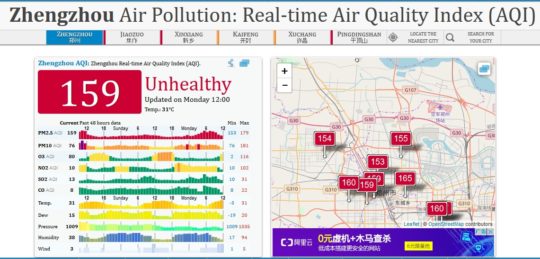
I don’t know why I get such a reaction at such low levels, though there are differences in the composition of the bad air between the U.S. and China. I think most people don’t feel any effects in the moderate range between 50 and 100, and if I weren’t cycling I probably wouldn’t, either. I’m surprised that the AQI guidelines only recommend for the unusually sensitive to consider reducing prolonged or heavy exertion outside, and for everyone else, it’s a good day to be active outside. They never, ever mention wearing a mask. I don’t get short of breath or a cough from being out in it, which are their indicators. Knowing this makes me think it’s a reaction to something other than the pm2.5 that does me in.
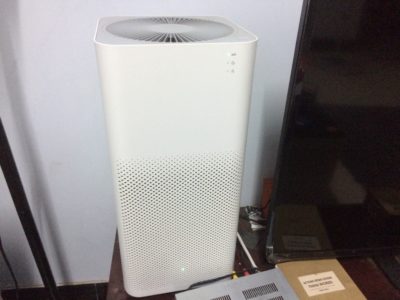
We also got an indoor air cleaner for the apartment last fall, though no indoor air quality measuring device. Indoor air should be under 35 according to Chinese health guidelines, but under 10 according to the World Health Organization. There is no ductwork as we know it and windows are commonly kept open year aound in the classrooms and dorms for ventilation.
If we lived in Zhengzhou or Beijing, we’d probably have gotten one of those and some sealing strips for the windows and doors, but it’s not as bad here.
They do seem to want to do something about the problem here, and issue more alerts than they used to, but they are afraid to limit economic activity. In Beijing they limit motor traffic on bad days, but I’ve read they average more days with air advisories than without.
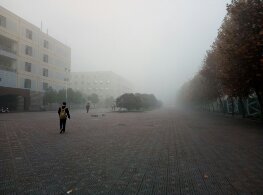
With upcoming cooler fall temperatures comes “ditch and plastic burning season”, which I don’t look forward to. There are public service announcements painted on the sides of buildings throughout the countryside exhorting people not to burn, but tradition goes further than mere words. It’s going to take some better alternatives. With my mask on though, none of this should bother me on my rides, or at least it didn’t last year.
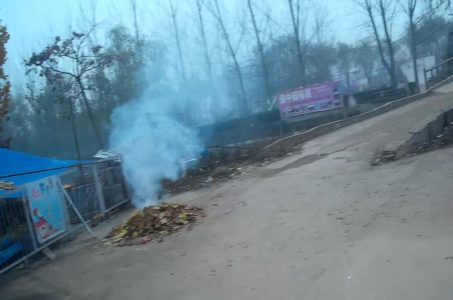
I reveled in the wonderful air and blue skies the two months I was back in Lincoln, though I still had the automatic response to put on my mask every time I put on my helmet. Lung cancer is the leading cause of death in China, so I hope they can get it figured out and have cleaner air soon.

My wife and I used to regularly pedal bike blacktop B south of our town in central Missouri. Five miles out and five miles back. We really enjoyed the level paved route in the countryside. We pedaled in intervals. Pedaling fast then slow then fast again. It works many muscles of your body.
That’s great! B roads can be wonderful rides if they’re not busy.